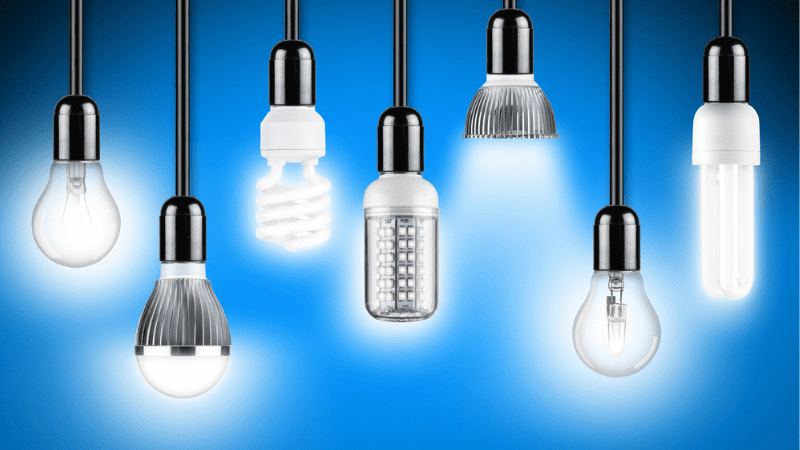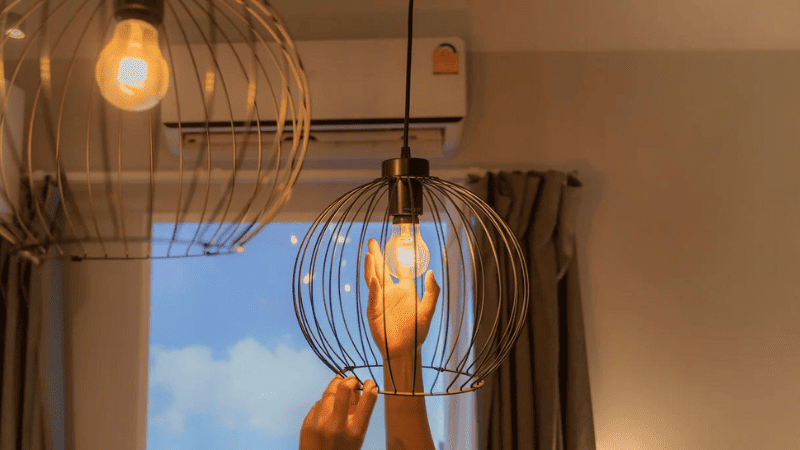If you are looking wholesale lighting solutions, click here.

Have you ever considered how much money LED lights could save you monthly?
LED lights are a smart choice, not just for better lighting but also for your wallet. Switching to LED lights makes you use less electricity than traditional bulbs. This means your energy bills can take a toll, and you won’t have to replace bulbs as often.
Want to know exactly how much you could save? Keep reading, and we’ll show you how LED lights can make a difference in your monthly expenses. Let’s break down the savings!
When lighting our homes, LED bulbs are increasingly becoming the go-to choice over traditional incandescent light bulbs. The reason? LED technology is far more energy efficient.
While incandescent bulbs release much energy as heat, LEDs (Light-emitting diodes) are designed to emit light more effectively, using significantly less electricity. This shift leads to energy savings and reduces your energy bill.
The energy costs associated with lighting can be substantial, but LED light bulbs help cut these down. An LED bulb uses about 75-80% less energy than an incandescent bulb, translating to real savings on your electricity bill.
Moreover, the average household saves considerably by switching to LEDs, as these energy-efficient bulbs have a much lower annual energy output.

Regarding brightness, LED lamps and bulbs provide ample light, measured in lumens, ensuring you don’t sacrifice brightness for efficiency.
The lighting costs for an average household can be significantly reduced, as LEDs require fewer replacements than incandescent lighting. LEDs have a longer lifespan, offering an advantage in energy use and cost over time.
According to the Department of Energy, LEDs use up to 90% less energy and last up to 25 times longer than traditional incandescent bulbs.
This efficiency is significant, considering that a standard LED bulb uses about 10 watts of power, compared to around 60 watts for most incandescent bulbs.
In terms of energy use, this difference is substantial. Lighting typically accounts for about 15% of an average home’s energy consumption.
By switching to LED bulbs, you’re not just replacing a light source; you’re making a cost-effective decision that reduces your electricity bill.
For example, using a 60-watt incandescent bulb for five hours a day and then switching to an LED equivalent can lead to savings of about ten dollars per year.

While this might not seem like a huge saving initially, it’s a more realistic number that adds up, especially when you multiply it by the bulbs in your house.
Additionally, the longer lifespan of LEDs means you save money on energy and the costs of frequently replacing bulbs.
In the lighting market, LED technology’s energy efficiency and cost-effectiveness make it a sensible choice for most people looking to reduce their electricity usage and save on energy costs.
Calculating the savings from switching to LED lights is simpler than you might think. Let’s break it down into easy steps.

Here’s where LEDs shine. The same calculations apply but with a lower wattage for LEDs. For instance, a 10-watt LED doing the same job as a 60-watt incandescent will cost significantly less.

Using the formula, the annual cost for a 10-watt LED bulb is just $1.64, compared to the $9.86 incandescent bulb.
Knowing how kilowatt hours (kWh) work is crucial to understanding the concept of monthly savings with LED lights. A kWh is a unit of energy equal to 1,000 watt-hours.
Your monthly electric bill is typically based on the number of kWh you consume. So, the less energy your lights use, the lower your bill.
LED lights are much more energy-efficient than their incandescent or CFL counterparts. This efficiency translates into significant savings on your monthly electricity bill. Let’s dive into an example to illustrate this.
Consider a 10-watt LED bulb and a 60-watt incandescent bulb, offering the same brightness of about 800 lumens. Assuming an average electricity rate of $0.1331 per kWh, we can calculate the cost of running each bulb for eight hours daily.
Here’s a table to break down the costs:
| Description | 10-Watt LED Bulb | 60-Watt Incandescent Bulb |
| Wattage | 10 watts | 60 watts |
| Daily Use | 8 hours | 8 hours |
| Daily Energy Consumption | 80 watt-hours (0.08 kWh) | 480 watt-hours (0.48 kWh) |
| Monthly Energy Consumption | 2.4 kWh (0.08 kWh x 30 days) | 14.4 kWh (0.48 kWh x 30 days) |
| Electricity Rate (example) | $0.1331 per kWh | $0.1331 per kWh |
| Monthly Cost | $0.32 (2.4 kWh x $0.1331) | $1.92 (14.4 kWh x $0.1331) |
This table shows that using a 10-watt LED bulb instead of a 60-watt incandescent bulb can save you about $1.60 monthly for each bulb.
This saving might seem small for one bulb, but the total savings can be substantial when you multiply it by the bulbs in your home. Switching to LED lights is not just an environmentally friendly choice but also makes a lot of sense for your wallet.
Four Easy Steps to Reduce Costs for Your Company by Using LED Lighting.
The first step is straightforward – swap your old light bulbs for energy-efficient LED bulbs. LEDs are much more efficient than traditional lighting options like CFLs and incandescent bulbs.
Energy.gov notes that LED lighting saves the average household about $225 annually in energy costs. The savings can be even more significant for a business, especially one with more lights.

Believe it or not, the sun is your ally in reducing energy costs. Natural light is free, brighter, and more energy-efficient than any artificial lighting.
Plus, letting in sunlight can boost the mood and productivity of your employees. So, open those blinds and let the sun do some work. This simple act can lead to a noticeable decrease in your energy bill.
Not every area in your business premises requires the same level of lighting. Be strategic about where you need strong, bright lights (like in showrooms, kitchens, or main work areas) and where softer, smaller lights or desk lamps will suffice (like in break rooms or individual offices).
This approach ensures that you’re using energy where it’s most needed without wasting it where it’s not.

Dimmers are an affordable and effective tool for controlling lighting costs. They’re not just for creating ambiance; they can significantly reduce lighting expenses.
By dimming lights to 75% brightness, you could save up to 20% on your lighting costs. This is because dimmers reduce the power flow to the bulb, thereby using less energy and extending the life of your bulbs.
Switching to LED lighting is smart for reducing electricity use and energy bills, especially when compared to traditional incandescent bulbs. LEDs provide the same amount of light with much higher efficiency and less heat generation, leading to significant energy savings.
This change benefits the average household, saving around $225 annually on their electricity bill and contributing to renewable energy efforts.
Additionally, the long lifespan of LEDs means fewer replacements of bulbs, adding to the savings. With their high lumens measure, LEDs offer bright and effective lighting, making them a cost-effective and environmentally friendly choice in the lighting market.
Are you excited to switch to LED lighting and start saving on energy costs? Let’s explore how Risun can transform your space with efficient and sustainable lighting.
At Risun, we offer everything from comprehensive lighting services to expert supply chain management, ensuring you get the best lighting solutions. Imagine lowering your energy bills while also helping the planet.
Contact us now to find out more about our services and see how we can brighten your space in the most efficient way possible.
Comprehensive Lighting Solutions for MRO Wholesalers and Professionals
send your inquiry
Hi, I'm the author of this post, and I have been in this field for more than 15 years. If you want to wholesale lighting fixtures or lighting related product, feel free to ask me any questions.
Learn More >>Download our catalog to view all of our lighting products.
Ready to get started ?
Send Your InquiryOur team will get back to you promptly

please
download
Get notified about new products
Our team will get back to you promptly!
Add your first comment to this post